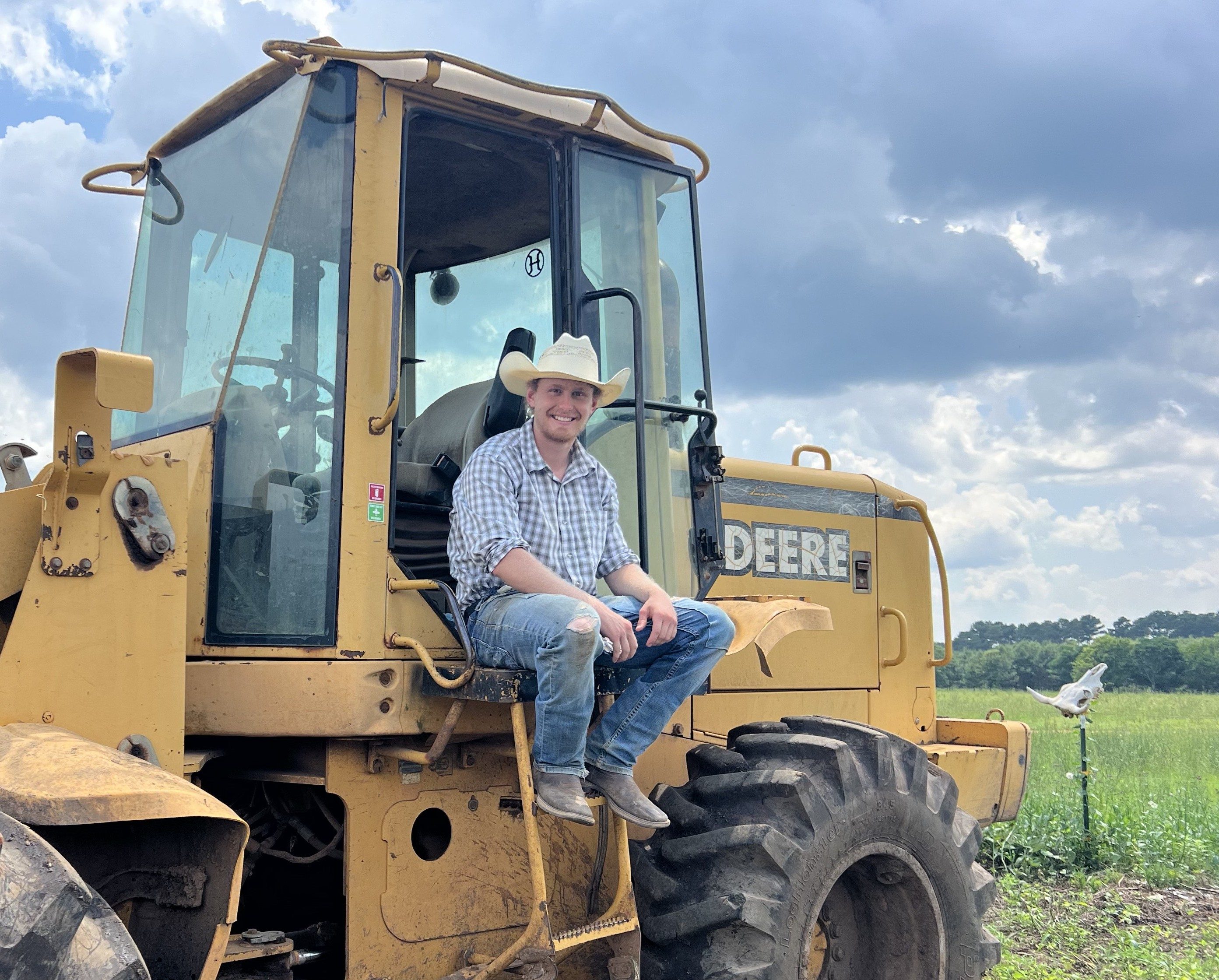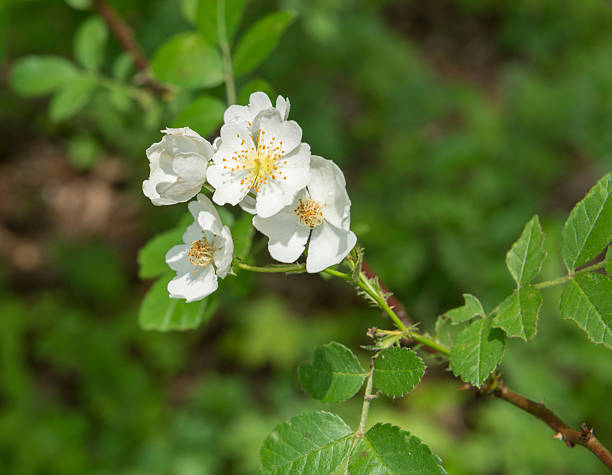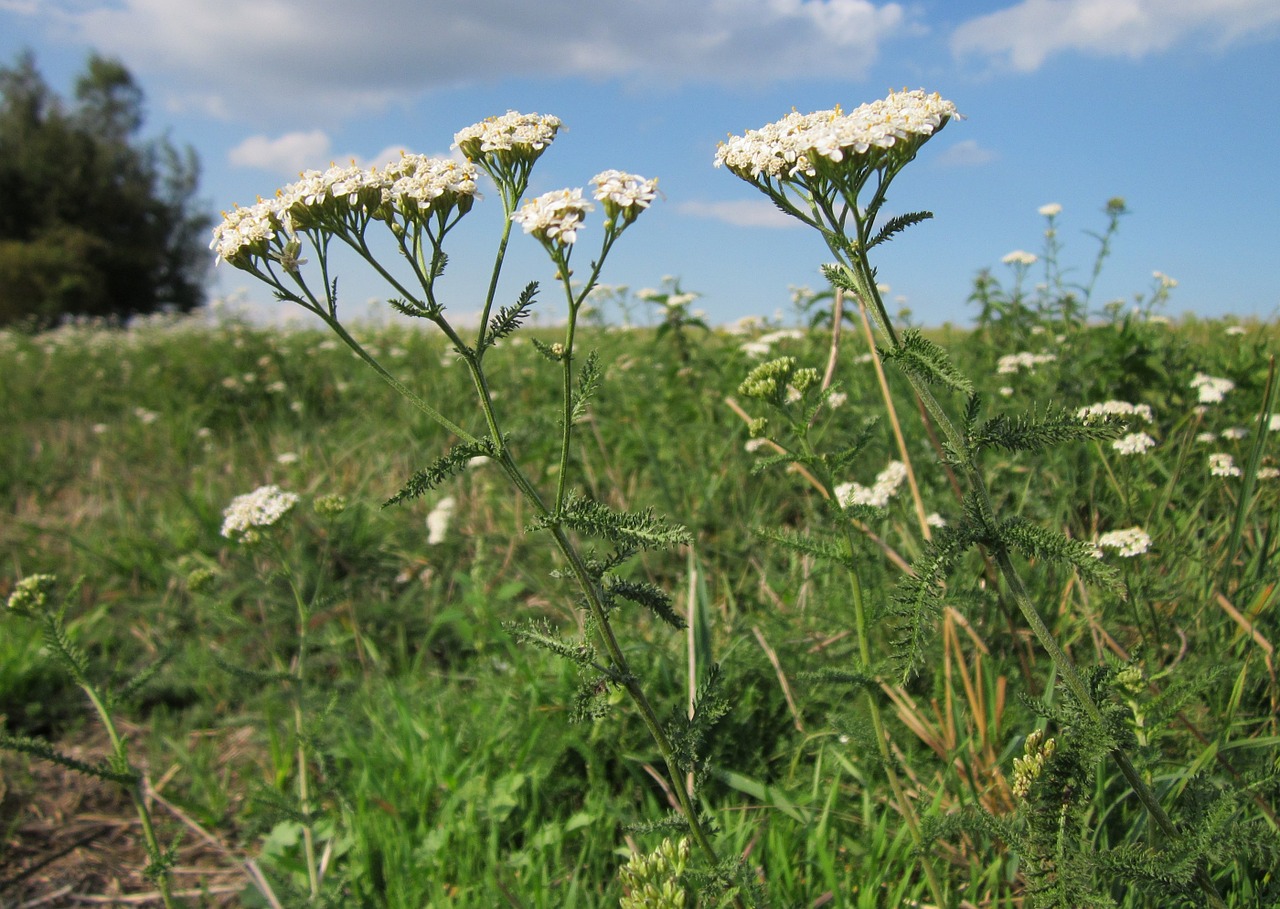TheFarmersDigest
The Farmers Digest
Jun 14, 2025

Editor
Chris Pigge

Editor
Miles Falk
Rethinking Pasture Weeds: Reading Nature's Repair Signals

Looking at weeds differently
Walk any pasture in spring and you'll see the eternal battle: farmers versus weeds. Spray rigs roll across fields targeting anything that isn't grass or clover. Thousands of dollars get spent on herbicides, yet the weeds keep coming back. What if this entire approach misses something fundamental about how healthy pasture systems actually work?
The conventional view treats weeds as invaders to be eliminated. But ecological science reveals a different story—one where many so-called weeds serve as nature's repair crew, working to fix the very problems that allowed them to establish in the first place. Understanding this shift in perspective can transform how graziers approach pasture management and potentially reduce both costs and chemical inputs while improving overall system health.
The Succession Story: Why Weeds Appear
Every landscape follows predictable patterns of plant succession—the process by which plant communities change over time in response to environmental conditions. Pioneer species are the first to colonize barren environments, or to repopulate disrupted ecosystems as part of this natural healing process. These plants often get labeled as weeds, but they're actually nature's emergency response team.
When soil becomes compacted, depleted, or chemically imbalanced, the plants that can thrive under these conditions move in first. They're not randomly invading productive pastures—they're specifically adapted to grow where other plants can't survive. Think of weeds as nature's diagnostic system, showing up precisely where and when soil conditions need attention.
The plant succession process contains three primary groups that farmers encounter everywhere. Accumulators appear first, designed to build fertility and improve conditions so other plants can eventually establish. Their job is to accumulate fertility and build the landscape to a point where more fertile plants can grow. The harder and less palatable a plant, the earlier in succession it appears, indicating more severe soil problems.
Exploiters come next, growing because of the fertility created by accumulator plants. These species exploit existing fertility and won't establish without suitable soil conditions. Finally, conservers maintain and preserve the fertility that's been built, representing the mature, diverse plant communities that characterize healthy pasture systems.
The Repair Function: What Weeds Actually Do
Rather than simply competing with grass, many weeds actively work to fix the underlying problems their presence indicates. Pioneer species play an important role in creating soil in primary succession, and stabilizing soil and nutrients in secondary succession. This repair function operates on multiple levels that benefit the entire pasture ecosystem.
Deep-rooted species break up compacted soil layers that restrict water infiltration and root development. Some roots grow to depths of four to eight feet, while others may penetrate to depths of 20 feet. These natural earth-moving operations create pathways for water, air, and future plant roots while requiring no fuel or equipment.
Many weeds concentrate and redistribute nutrients throughout the soil profile. Deep penetration by their roots often enables weeds to accumulate various elements from the subsoil, particularly trace elements, and transport them to the soil surface. Through the weed's subsequent death and decomposition, these elements become available to crop plants with less extensive root systems.
The biological activity around weed root systems also improves soil structure and microbial communities. As these plants grow, live, and decompose, they're actively building the soil conditions that will eventually support more desirable species. Rather than fighting this process, successful graziers learn to work with it.
The Mineral Connection: Nature's Supplement Program
One of the most overlooked aspects of weed ecology involves their role as natural mineral concentrators. Many common pasture weeds contain significantly higher levels of essential minerals than conventional forage species. This isn't coincidental—these plants evolved to thrive in mineral-deficient soils by efficiently extracting and concentrating whatever nutrients are available.
Livestock instinctively seek out these mineral-rich plants when given the opportunity. A partial list of plants that have deworming effects on cattle includes many species typically considered weeds: blackberry, raspberry, elder shoots, pokeweed, various nettles, oak leaves, yarrow, and many others. This represents nature's pharmacy in action, providing health benefits that livestock naturally utilize when management allows.
Studies consistently show that many weeds contain higher concentrations of zinc, copper, magnesium, selenium, and other essential minerals compared to standard pasture grasses. While this doesn't mean weeds should dominate pastures, it suggests that completely eliminating them may remove valuable nutritional resources that livestock would naturally access.
The key insight is understanding that cattle will safely self-medicate themselves when basic management principles are followed: adequate overall nutrition, proper plant recovery time, and access to diverse plant communities rather than being forced to consume any single species exclusively.

Reading the Landscape: What Weeds Tell You
Learning to interpret weed patterns provides valuable information about underlying soil conditions that need attention. This diagnostic approach focuses on understanding why certain plants appear rather than simply fighting symptoms.
Weeds indicating compacted soil signal the need for improved drainage, reduced traffic, or management changes that allow soil structure recovery. Plants that accumulate specific minerals often indicate deficiencies in soil availability of those nutrients. Species that thrive in acidic conditions point toward pH problems that lime application could address.
The goal isn't memorizing individual plant preferences, but developing the skill to read landscape patterns. When soil is compacted in a pasture, root growth is restricted. Slow root growth limits forage growth. The weeds appearing under these conditions aren't causing the poor forage performance—they're revealing the underlying cause.
This diagnostic capability helps prioritize management efforts toward addressing root causes rather than treating symptoms. Fixing compaction, adjusting pH, or improving drainage often proves more effective and economical than repeated herbicide applications that fail to address why weeds established in the first place.
The Diversity Advantage: Working With Natural Systems
Healthy pasture ecosystems naturally resist weed problems through competitive exclusion and resource utilization. A diverse mix of plants is always better than simplified monocultures. Research suggests that good pastures should contain numerous different plant species, with declining diversity indicating system deterioration.
This diversity principle applies to the weed question as well. Problems arise when any single species—whether grass, clover, or weed—dominates an ecosystem. The goal becomes managing for beneficial diversity rather than perfect uniformity. Many weeds provide legitimate ecosystem services when present in appropriate proportions within diverse plant communities.
Successful grazing systems often feature what might appear "weedy" to conventional thinking, but these diverse communities frequently outperform simplified grass monocultures in terms of soil health, livestock nutrition, and system resilience. The key lies in understanding which plants serve beneficial functions and managing them accordingly.
Should Farmers Worry About Weed Spread?
The concern about weed spread depends entirely on understanding succession and management goals. Pioneer species and early succession plants naturally spread when soil conditions favor them. Fighting this spread without addressing underlying conditions proves both expensive and ultimately futile.
However, aggressive invasive species that can dominate and damage productive systems require different approaches. Plants like multiflora rose, autumn olive, or johnsongrass create genuine problems regardless of their ecological functions. The distinction lies in understanding which weeds indicate manageable soil problems versus which species pose serious threats to pasture productivity.
Most common broadleaf weeds respond to improved management by naturally declining as desirable species become more competitive. Healthy, diverse pasture ecosystems naturally resist weed problems better than simplified systems. By keeping soil nutrient levels adequate and managing grazing to promote overall plant community health, weed pressure typically decreases without intensive control measures.
The spread concern often resolves when management addresses the conditions that favor weed establishment. When soil compaction gets fixed, pH gets balanced, and fertility becomes adequate, the competitive advantage shifts toward desirable species naturally.
Practical Applications: A New Management Framework
This ecological understanding suggests a different approach to weed management that works with natural processes rather than against them. Instead of immediately reaching for herbicides, successful graziers first ask what the weeds indicate about their management and soil conditions.
The diagnostic approach involves observing which weeds appear where, when, and under what conditions. This information guides management decisions toward addressing root causes. Compaction problems get solved through improved drainage, reduced traffic, or rotational grazing that allows recovery time. Fertility issues get addressed through appropriate amendments or improved nutrient cycling.
Selective management replaces blanket control strategies. Some weeds provide benefits that justify tolerance within diverse plant communities. Others indicate problems that need immediate attention. A few pose genuine threats requiring aggressive control. Learning to distinguish between these categories improves both effectiveness and efficiency.
The timing of interventions becomes crucial. Working with succession means supporting the natural progression toward more desirable plant communities rather than fighting the entire process. This might involve strategic grazing management, targeted improvements to growing conditions, or selective control of truly problematic species while tolerating beneficial diversity.
The Economic Reality: Costs Versus Benefits
The conventional approach to weed control involves significant ongoing costs with often disappointing results. Herbicide applications, equipment time, and repeated treatments add up quickly, yet many operations continue dealing with the same weed problems year after year.
The ecological approach front-loads investments in soil improvement and management system changes, but often reduces long-term control costs while improving overall system performance. Fixing compaction, balancing pH, improving fertility, and optimizing grazing management addresses multiple issues simultaneously.
The return on investment extends beyond weed control. Healthier soils support better forage production, improved water infiltration, enhanced drought resilience, and reduced input requirements. Diverse plant communities often provide better livestock nutrition and natural health benefits that reduce supplement costs.
Most importantly, working with natural systems proves more sustainable than fighting against them. Management strategies that align with ecological processes tend to become easier and less expensive over time as systems move toward stability.
Reframing the Conversation
The shift from "weed control" to "succession management" represents more than semantic change—it's a fundamental reorientation toward understanding and working with natural processes. This doesn't mean accepting poor pasture management or tolerating serious invasive species problems. Instead, it means getting better at reading what the land is trying to tell us through the plants it grows.
Successful graziers increasingly understand their role as ecosystem managers rather than plant controllers. They focus on creating conditions that favor desirable species while understanding that some plant diversity—including carefully managed "weeds"—contributes to overall system health and resilience.
The goal isn't perfect uniformity but productive diversity. The most successful operations often feature pastures that look "messier" than conventional thinking prefers, but these diverse communities frequently outperform simplified systems across multiple measures of health and productivity.
Understanding weeds as diagnostic tools and repair mechanisms opens up management strategies that reduce costs while improving outcomes. The key lies in learning to distinguish between helpful diversity and problematic invasions, then managing each accordingly within the broader context of healthy pasture ecosystems.
This perspective doesn't eliminate the need for active management—it makes management more intelligent, more targeted, and ultimately more effective by working with the natural processes that govern all plant communities.
Applying the Principles: Two Theoretical Scenarios
To illustrate how this succession-based thinking works in practice, consider these hypothetical situations that many graziers encounter:
Scenario 1: The Weed-Dominated Field
A farmer purchases 40 acres that's been neglected for years. The field is dominated by brambles, dock, pigweed, and various other weeds with very little grass remaining. Soil tests reveal compaction, low pH, and poor fertility.
The conventional approach would involve herbicide applications to kill existing vegetation, followed by tillage and reseeding. However, the succession-management approach recognizes that these weeds are actively working to fix the underlying problems.
The strategic response involves using controlled grazing to accelerate the natural repair process, and this rotational approach is fundamental to any successful pasture renovation. For operations with sheep or goats, high-density, short-duration grazing can effectively browse down woody weeds while trampling adds organic matter and begins breaking up surface compaction.
However, most graziers can achieve the same rotational grazing results using cattle with strategic hay feeding. Rolling out hay bales in strips across the weedy areas creates concentrated animal impact while providing supplemental nutrition. By moving these hay feeding locations every few days, you're implementing true rotational grazing— concentrating animal impact in specific zones, then allowing adequate rest periods for plant and soil recovery.
This rotational feeding approach represents one of the most effective biological methods for fixing severely degraded pastures. The cattle congregate around the hay, trampling and manuring heavily in these zones while consuming both the hay and surrounding vegetation they would normally avoid. The magic happens during the rest periods between moves, when soil biology processes the organic matter and the ecosystem begins recovering.
This approach works especially well during periods when pasture quality is naturally lower—late fall, winter, or during drought—when cattle readily consume the hay and whatever forage surrounds the feeding areas. The key lies in moving feeding sites frequently enough to prevent creating permanent sacrifice areas while ensuring every problem zone receives this concentrated biological treatment followed by adequate rest.
For operations willing to tackle more intensive management, pastured pigs can provide exceptional results through their natural rotational impact. Pigs instinctively practice intensive grazing and tillage, consuming both above and below-ground plant parts that other livestock cannot utilize effectively. However, pig management requires more sophisticated infrastructure, including sturdy fencing, reliable water systems, and careful attention to soil conditions to prevent excessive damage during wet periods. The learning curve is steep, but operations that master rotational pig management often see dramatic improvements in problem areas within a single growing season.
Regardless of the livestock species used, the timeline involves implementing rotational grazing: concentrated animal impact followed by adequate rest periods. Whether through strategic hay feeding with cattle, browsing with small ruminants, or tillage with pigs, the biological activity from properly managed rotational grazing does the heavy lifting of soil structure improvement and organic matter addition that transforms degraded land into productive pasture.
Within 2-3 years, this approach typically results in diverse, productive pasture with significantly reduced weed pressure—at a fraction of the cost of conventional renovation and without the soil disruption that often triggers new weed problems.
Scenario 2: Scattered Weeds in Healthy Pasture
A 60-acre farm has generally productive pastures dominated by timothy, fescue, and clover, but scattered clumps of dog fennel, multiflora rose, and milkweed are appearing in various locations.
The key insight here is that this really isn't a big problem. When your pasture is dominated by the species you want, scattered weed clumps indicate a largely healthy system where the weeds are likely serving specific ecological functions.
These spot occurrences often reveal localized conditions—dog fennel in a wet spot that needs better drainage, multiflora rose in a low-fertility area where it's bringing up deep minerals, milkweed addressing specific soil chemistry needs. Rather than viewing these as problems to eliminate, consider them as nature's specialists handling site-specific issues that your main forage species can't address.
The strategic response focuses on monitoring rather than intensive control. Keep an eye on whether these clumps are expanding significantly or starting to dominate larger areas. For multiflora rose, consider strategic trampling during seed-setting time to prevent excessive spread, but don't stress about complete elimination.
Most importantly, maintain the health of your dominant species through proper grazing management. Leave adequate residual when grazing, ensure proper rest periods, and avoid soil damage that would give weeds competitive advantages. When the bulk of your pasture consists of productive, desirable species, nature tends to select for maintaining that balance.
The scattered weeds may actually contribute beneficial diversity—providing minerals the main species don't access, offering wildlife habitat, or serving as natural medicine that livestock selectively utilize when needed. As long as cattle have plenty of quality pasture, these weeds can serve their natural purpose without significantly impacting overall productivity.
Both scenarios illustrate the fundamental principle: work with succession rather than against it, use biological activity to accelerate soil improvement, and address underlying causes rather than fighting symptoms. The result is often better long-term outcomes at lower cost with reduced chemical inputs.
This perspective doesn't eliminate the need for active management—it makes management more intelligent, more targeted, and ultimately more effective by working with the natural processes that govern all plant communities.
References
AGRIVI. "Weeds as Soil Indicators." November 22, 2021.
BC Farms & Food. "Weeds that Indicate Soil Conditions." May 16, 2017.
EAP McGill. "Weeds as Indicators Of Soil Conditions."
eOrganic. "An Ecological Understanding of Weeds."
Farm and Dairy. "Recognize soil health indicators in pastures."
Farm Progress. "We can manage so cattle can deworm themselves." January 10, 2023.
Growing Guides. "Weeds As Soil Indicators." July 11, 2019.
Living Permaculture. "Weeds: Good for soil, and helpful indicators." July 20, 2020.
Michigan State University Extension. "Weeds are an indicator of a soil's health."
National Geographic Education. "Role of Keystone Species in an Ecosystem."
NRDC. "Keystone Species 101." March 25, 2024.
Oregon State University Extension. "Pasture weeds can have forage value." December 27, 2024.
Tarwyn Park Training. "What is a Plant Succession."
The Old Farmer's Almanac. "What Weeds Tell You About the Soil: Natural Soil Test."
University of Chicago News. "What is ecological succession?" March 25, 2025.
University of Georgia Forage Extension Team. "Minerals for Grazing Cattle."